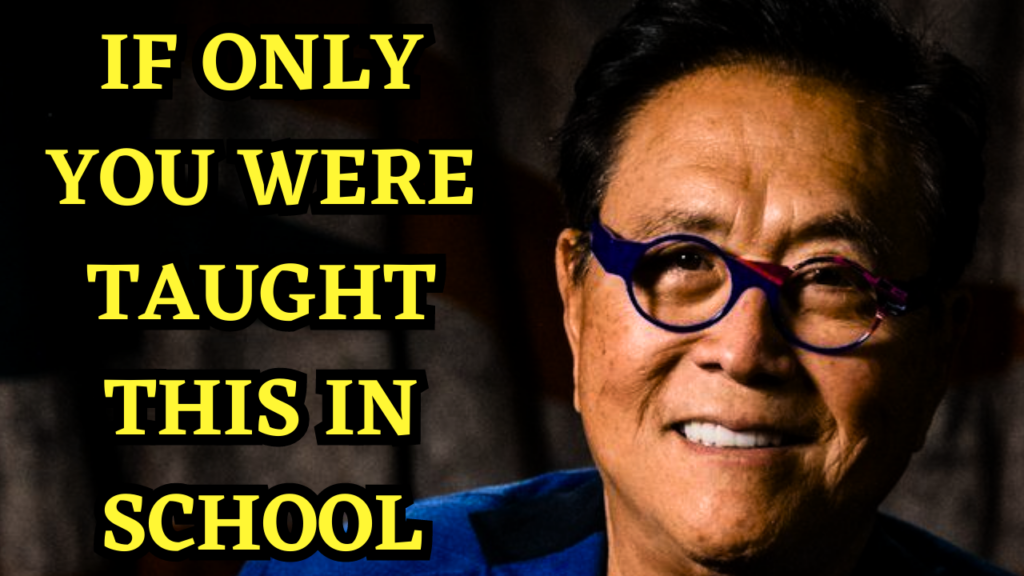Are you interested in achieving financial independence and retiring early? Look no further than the best-selling book “Rich Dad Poor Dad” by Robert Kiyosaki. In this book, Kiyosaki shares valuable insights on financial education, investment, and building wealth. In this post, we provide a comprehensive Rich Dad Poor Dad summary to help you get started on your journey to financial freedom. And if you’re looking for a reliable bookstore that offers a wide range of finance books, we’ve got you covered too. So visit our bookstore and grab your copy from there. Don’t miss out on the opportunity!
“Are you interested in learning about financial education and how to achieve financial success? Check out my latest YouTube episode where I summarize the key takeaways from ‘Rich Dad Poor Dad.’ And if you prefer reading, you can also continue below for a brief overview of the book’s insights.”
Financial success is something that many people aspire to achieve but often struggle to attain. However, the book “Rich Dad Poor Dad” by Robert Kiyosaki provides practical tips and a fresh perspective on achieving financial freedom. In this article, we’ll explore some of the insights presented in the book and provide real-world examples of how successful entrepreneurs have leveraged their wealth to generate passive income.
Book Summaries and Reviews
“Rich Dad Poor Dad” is a personal finance book that emphasizes the importance of financial education and a mindset shift to achieve financial success. The book presents the author’s two “dads”: his actual father, who had a traditional middle-class mindset about money, and his best friend’s father, who was a wealthy entrepreneur and served as his mentor. Through their different approaches to money and investing, Kiyosaki learned important lessons about building wealth and achieving financial freedom.
The book covers topics such as the difference between assets and liabilities, the importance of passive income, and the need to take calculated risks in order to grow wealth. Overall, “Rich Dad Poor Dad” provides readers with practical advice and a new perspective on money and investing.
Five Main Insights
The first insight presented in the book is the idea that the wealthy don’t labor for money, but rather leverage it to work on their behalf. Successful entrepreneurs and investors use money to create passive income streams through real estate investing, starting a business, or investing in stocks and other assets.
Barbara Corcoran, a successful entrepreneur and investor, is a prime example of how leveraging money can lead to financial success. Corcoran invested in numerous properties using other people’s money to finance her deals. By building a portfolio of income-generating properties, she was able to make money work for her, while also building long-term wealth through property appreciation.
Another example of how the rich make money work for them is through starting a business. By creating a product or service that solves a problem or meets a need in the market, successful entrepreneurs are able to generate revenue even when they’re not actively working. They may also leverage other people’s time and expertise by hiring employees or outsourcing certain tasks, allowing them to focus on growing the business and identifying new opportunities.
Elon Musk is another example of how leveraging initial success can lead to long-term financial success. Musk used the money he earned from selling his first company, Zip2, to start X.com, an online payment company. X.com eventually merged with PayPal, and Musk used his share of the sale to start several other successful companies, including Tesla, SpaceX, and SolarCity.
The second insight presented in the book is the difference between assets and liabilities. Kiyosaki argues that assets generate income, while liabilities drain income. He recommends that readers focus on acquiring assets that generate passive income, such as real estate, stocks, and businesses.
The third insight presented in the book is the importance of passive income. Kiyosaki recommends that readers focus on creating passive income streams that can generate income even when they’re not actively working. He suggests that readers invest in income-generating assets such as rental properties, dividend-paying stocks, and businesses.
The fourth insight presented in the book is the need to take calculated risks in order to grow wealth. Kiyosaki argues that taking risks is necessary to achieve financial success, but it’s important to do so in a calculated manner. He suggests that readers start small and gradually increase their risk-taking as they gain experience and knowledge.
The fifth and final insight presented in the book is the importance of financial education. Kiyosaki argues that traditional education does not provide the financial knowledge necessary to achieve financial success. He suggests that readers educate themselves about money, investing, and business by reading books, attending seminars, and networking with successful entrepreneurs and investors.
Best practices for financial education include learning about personal finance and budgeting, understanding the basics of investing and the stock market, and developing an entrepreneurial mindset. It’s also important to seek out advice and guidance from financial experts and to continuously educate oneself as financial markets and trends evolve over time.
One way to start on the path to financial education is by reading books on personal finance and investing. Some popular titles include “Rich Dad Poor Dad” by Robert Kiyosaki, “The Intelligent Investor” by Benjamin Graham, “The Millionaire Next Door” by Thomas J. Stanley and William D. Danko, and “The Simple Path to Wealth” by JL Collins.
Attending seminars and workshops hosted by financial experts can also be a great way to learn more about investing and business. Many seminars and workshops are available online, making it easy to participate from anywhere in the world.
Networking with successful entrepreneurs and investors can also provide valuable insights and guidance for those looking to improve their financial literacy. Joining a local business or investment club, attending networking events, and connecting with like-minded individuals on social media can all be great ways to expand one’s knowledge and network.
Conclusion
Financial education is an essential component of achieving financial success. By investing in one’s financial knowledge and continuously learning about personal finance, investing, and business, individuals can take control of their financial future and create the wealth and abundance they desire.
Looking to break bad habits and achieve financial independence? While understanding the role of habits is important, tracking your progress is key. Our habit tracker and habit-change workbook, available for free download, can help you achieve your goals.
Unlock the secrets to financial success and transform your mindset with “Rich Dad Poor Dad” – get your copy now on Amazon.
To achieve financial independence, one must go beyond simple savings and embrace discipline, strategic planning, and access to valuable resources. Our blog offers expert insights and strategies on financial independence, including tips from renowned experts like Napoleon Hill. Additionally, our bookstore is stocked with must-reads like “Rich Dad Poor Dad,” a book that provides a summary of the lessons learned from a successful businessman’s “rich dad” and his “poor dad.” For those looking for free resources, our website also offers free audio book downloads and access to YouTube audiobooks on financial independence and related topics. Don’t miss out on these valuable resources to help you achieve your financial goals, including the popular “Financial Independence Retire Early” movement.
- Rich Dad Poor Dad Book Summary and Review: The Importance of Financial Education?
- Understanding the Difference between Assets and Liabilities: A Comprehensive Financial Book Review
- Creating Passive Income Streams: A Comprehensive Guide
- The Importance of Financial Education: A Review of Rich Dad Poor Dad
- The Power of Leveraging Other People’s Money: A Key to Financial Success
- Real Estate Investing: Insights from the Best Financial Book Summaries
- Exploring the Cash Flow Quadrant: A Guide to Understanding Your Finances
- The Power of Entrepreneurship: Exploring the Benefits of Starting Your Own Business – Rich Dad Poor Dad
- Why Relying on a Single Income Stream is Risky: Understanding the Dangers and Solutions
- Building a Strong Financial Foundation: Tips for Financial Stability and Success
- Maximizing Your Wealth: A Guide to Legally Minimizing Your Taxes
- The Role of Emotions in Financial Decision-Making: A Guide to Managing Your Money Mindset
- Why a College Degree May Not Guarantee Financial Success: Lessons from Personal Development Books
- The Art of Taking Calculated Risks in Investing and Business
- 5 Lessons I Learned from Rich Dad Poor Dad – A Must-Read for Financial Education
- The Ultimate Guide to Achieving Financial Freedom: Lessons from Rich Dad Poor Dad
- Why “Rich Dad Poor Dad” Is the Best Personal Finance Book of All Time
- Rich Dad Poor Dad Success Stories: Real-Life Examples of Financial Empowerment
- 10 Powerful Quotes from Rich Dad Poor Dad That Will Change Your Life




Pingback: Creating Passive Income Streams: A Comprehensive Guide - Book Butter
Pingback: Exploring the Cash Flow Quadrant: A Guide to Understanding Your Finances - Book Butter